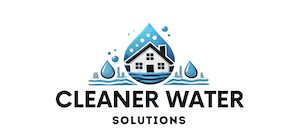As a pet owner, you likely go out of your way to ensure your furry family members have the best possible care—nutritious food, regular exercise, and routine vet visits. But one essential aspect of your pet’s health that often gets overlooked is the quality of the water they drink. Just like humans, pets rely on clean, safe water to stay healthy. Poor water quality can have serious consequences for your pet’s overall well-being, potentially leading to health issues that range from mild discomfort to life-threatening conditions.
In this article, we’ll explore how water quality can affect your pets, the specific health risks associated with poor water quality, and what steps you can take to ensure your pets are drinking the cleanest, safest water possible.
Why Water Quality Matters for Pets
Pets, like humans, need water to support a wide range of bodily functions. Water helps regulate body temperature, aids digestion, facilitates nutrient absorption, and is vital for organ function. But just as contaminants in water can harm people, they can also harm animals.
Unfortunately, household pets may be even more vulnerable to the negative effects of poor water quality because of their smaller size and faster metabolic rates. Toxins that might not have an immediate effect on humans can accumulate in pets’ systems more quickly, leading to adverse health outcomes over time.
Common Contaminants in Water That Can Harm Pets
Water contamination can come from a variety of sources, including naturally occurring minerals, chemicals added during water treatment, and pollutants that enter water supplies from agricultural or industrial activity. Here are some common contaminants that can affect the water your pet drinks:
- Chlorine and Chloramine
How They Affect Pets: Chlorine and chloramine are commonly used in municipal water treatment to kill bacteria and other pathogens. While effective at disinfection, these chemicals can be harmful to pets, particularly fish and amphibians. Even low levels of chlorine can irritate sensitive skin, eyes, and gills in aquatic pets.
Health Risks: Prolonged exposure to chlorinated water can lead to skin irritation, respiratory issues, and digestive problems in pets. Chloramine, a combination of chlorine and ammonia, is even more dangerous for fish, as it can affect their ability to absorb oxygen. - Lead
How It Affects Pets: Lead contamination is a well-known issue for human health, but pets are also at risk. Lead can enter water supplies from corroded pipes or plumbing fixtures. Dogs, cats, and other pets are particularly vulnerable because of their smaller size.
Health Risks: According to the American Veterinary Medical Association (AVMA), lead poisoning in pets can cause a range of symptoms, including vomiting, diarrhea, loss of appetite, lethargy, and even seizures. Long-term exposure to lead can result in organ damage and neurological issues. - Fluoride
How It Affects Pets: Fluoride is often added to municipal water supplies to prevent tooth decay in humans. However, pets do not benefit from fluoride in the same way humans do, and excessive fluoride exposure can be harmful.
Health Risks: High levels of fluoride in drinking water have been linked to bone problems and dental fluorosis in pets, particularly in puppies and kittens whose bones and teeth are still developing. A study published in the Journal of Veterinary Dentistry found that excessive fluoride can lead to weakened bones and abnormal enamel formation. - Nitrates and Nitrites
How They Affect Pets: Nitrates and nitrites commonly enter water supplies through agricultural runoff, fertilizers, and improperly maintained septic systems. Pets that drink water containing high levels of nitrates are at risk, particularly young animals or those with pre-existing health conditions.
Health Risks: Nitrate contamination in pets can lead to a condition called methemoglobinemia, which reduces the blood’s ability to carry oxygen. Symptoms include lethargy, difficulty breathing, and a bluish tint to the skin or gums. In severe cases, it can be fatal if not treated promptly. - Hard Water (Calcium and Magnesium)
How It Affects Pets: Hard water contains high levels of minerals like calcium and magnesium, which can cause problems for pets, particularly those prone to urinary or kidney issues. While hard water is not toxic, it can lead to mineral buildup in pets’ bodies over time.
Health Risks: Pets that drink hard water may be at an increased risk of developing urinary stones or bladder crystals, particularly cats and dogs. A study published in Veterinary Research Communications found that mineral-rich water can contribute to the formation of calcium oxalate stones in dogs, which can cause pain, urinary blockages, and, in severe cases, require surgery. - Pesticides and Herbicides
How They Affect Pets: Pesticides and herbicides can enter water supplies through agricultural runoff or improper disposal of chemicals. Pets that consume water contaminated with these substances are at risk of serious health problems.
Health Risks: Ingesting water contaminated with pesticides or herbicides can lead to poisoning, with symptoms that include vomiting, diarrhea, seizures, and in severe cases, death. Long-term exposure can also increase the risk of cancer and damage to the liver or kidneys.
Signs Your Pet May Be Affected by Poor Water Quality
While many of the contaminants listed above can be hard to detect without proper water testing, there are some signs that your pet may be affected by poor water quality:
Gastrointestinal Issues: Frequent vomiting, diarrhea, or loss of appetite could indicate that your pet is ingesting harmful chemicals or bacteria in their water.
Skin and Coat Problems: If your pet’s skin becomes dry, irritated, or itchy, or if their coat loses its shine, it may be a reaction to chlorine or other chemicals in the water.
Lethargy or Behavioral Changes: Pets that seem more lethargic than usual or show changes in behavior may be suffering from low-level exposure to toxins like lead or nitrates.
Increased Thirst: If your pet suddenly starts drinking more water than usual, it could be a sign of mineral imbalances or contamination.
Steps to Improve Your Pet’s Water Quality
Ensuring that your pets have access to clean, safe water is one of the easiest ways to protect their health. Here’s what you can do to improve the quality of their drinking water: - Use Filtered Water
One of the simplest ways to provide clean water for your pets is to use a water filtration system that removes common contaminants like chlorine, lead, and nitrates. Activated carbon filters and reverse osmosis systems are effective at removing these harmful substances. - Test Your Water Regularly
Regularly testing your water for contaminants like lead, nitrates, and bacteria can help you stay on top of any issues before they affect your pets’ health. You can use home water testing kits or contact a professional water testing service to get a detailed analysis of your water quality. - Provide Fresh Water Daily
Make sure to change your pet’s water frequently to prevent bacterial growth, especially during warmer months. Stale water can become a breeding ground for harmful microorganisms. - Consider Bottled Water for Sensitive Pets
If your water supply has persistent quality issues, you may want to consider providing bottled water for pets that are sensitive to contaminants, particularly those with kidney or urinary problems. - Monitor Pet Health
Keep an eye on your pet’s health and behavior. If you notice any signs of illness, such as vomiting, diarrhea, or changes in drinking habits, consult with your veterinarian to rule out water-related issues.
Conclusion
Water quality is just as important for your pets as it is for the rest of your family. Contaminants like chlorine, lead, and nitrates can pose serious health risks to pets, particularly those with pre-existing health conditions or sensitivities. By regularly testing your water, using filtration systems, and providing fresh, clean water daily, you can protect your pets from the hidden dangers that might be lurking in their water bowls.
As a pet owner, taking steps to ensure that your pet’s drinking water is safe will contribute to their long-term health and happiness, giving you peace of mind knowing that you’re providing the best possible care for your furry companions.
Cleaner Water Solutions is here to help you and your pets enjoy the cleanest, safest water possible. Contact us for a free water test today, and we’ll help you find the best water filtration solution for your home.




